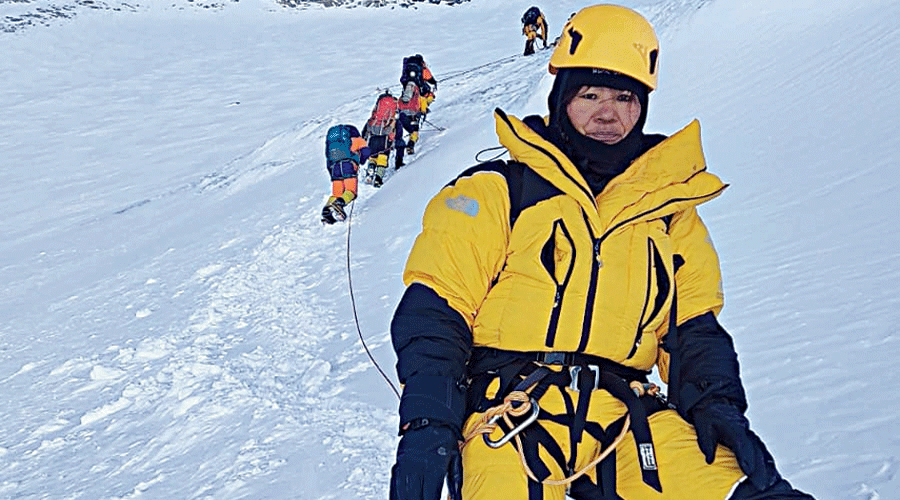Asmita Dorjee, 38, a senior instructor at the Tata Steel Adventure Foundation, has become the first Indian woman to reach the South Summit of Mt Everest (8745 metres) without supplementary oxygen.
Asmita, whose father Ang Dorjee had passed away during another mission, came to India from Nepal in 1989 after the death of her mother and was brought up in Jamshedpur by ace mountaineer Bachendri Pal, the first Indian woman to summit Mt Everest in 1984.
Asmita, who returned from the South Summit on May 13, said she was disappointed after failing to summit Mt Everest but satisfied with her attempt. She had been training for the summit for the last three years with a focus on improving her strength, endurance and stamina, keeping the no-oxygen attempt in mind.
“The expedition route beyond the 8000-metre mark, also called the ‘death zone’, is considered extremely dangerous because of thin air, strong winds and bitter cold. Due to very low oxygen availability, climbers are required to use supplementary oxygen from camp three, that is above 7100 metres in order to survive and return safely. There have been very few people in the world who have climbed Mt Everest without supplementary oxygen,” said Hemant Gupta, head of TSAF, which had supported the expedition.
Asmita reached the South Summit around 6am on May 13.
“Asmita temporarily lost her vision due to lack of oxygen in her body. Her fellow sherpas took the decision of a turnaround and supported her in the down climb from South Summit to the base camp (8000 metres). After returning to the base camp, she was hoping for another attempt, but the doctors advised her against it as she could have developed the same symptoms of high-altitude cerebral edema again. She started her return from base camp on May 18 and came back to Kathmandu on May 22. Safety has always been the frontrunner of any expedition organised by the TSAF,” Gupta said.
“We are delighted to have Asmita back with us after reaching 8745 metres without supplementary oxygen. The fact that she managed to accomplish this task without using supplementary oxygen makes us even more proud of her achievement,” said TSAF chairman and vice-president (corporate services) of Tata Steel, Chanakya Chaudhary, who had flagged off the expedition on March 29 along with Gupta.
Asmita left India on April 3 and reached Kathmandu on the same day. She reached Mt Everest base camp (17,500ft) on April 14 after a trek of eight days through the Khumbu region. As part of acclimatisation, she climbed Mt Lobuche East (20,075ft) on April 20. After that, she did two more rotations till camp 3 at 23,000ft. As she was attempting Mt Everest without supplementary oxygen, she did an additional rotation till 25,000ft and stayed one night at camp 3.
She started the final summit push on May 9. She reached camp 4 (26,400ft) at 11am on May 12. After a few hours of rest, she embarked on the last leg of her journey to the summit at 8pm on May 12.
The TSAF was planning to send Asmita to Mt Everest in 2020 and 2021. However, the expedition was postponed because of the Covid-19 pandemic.











